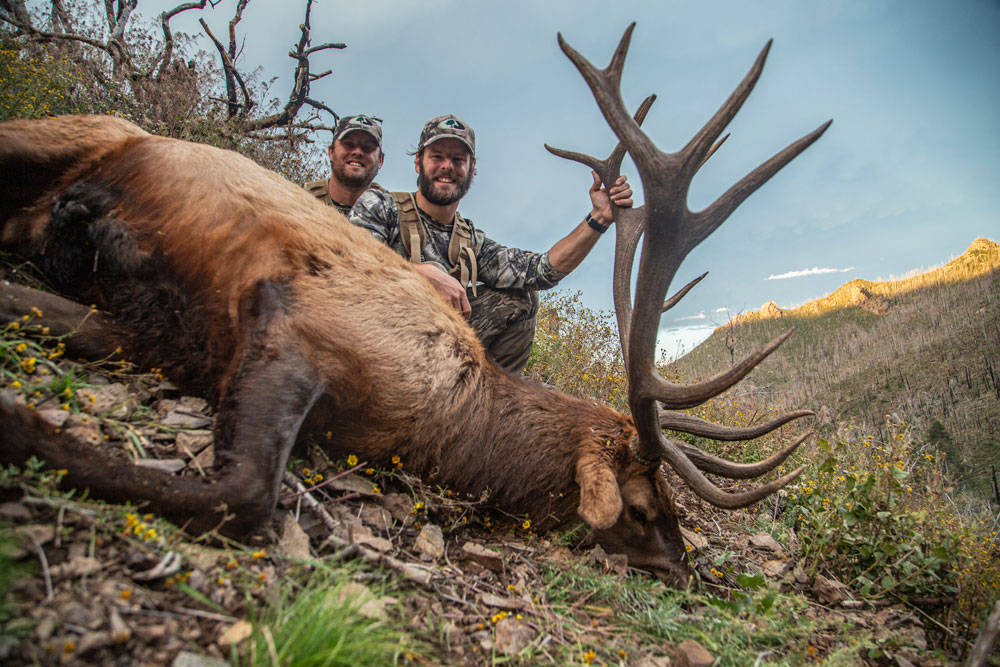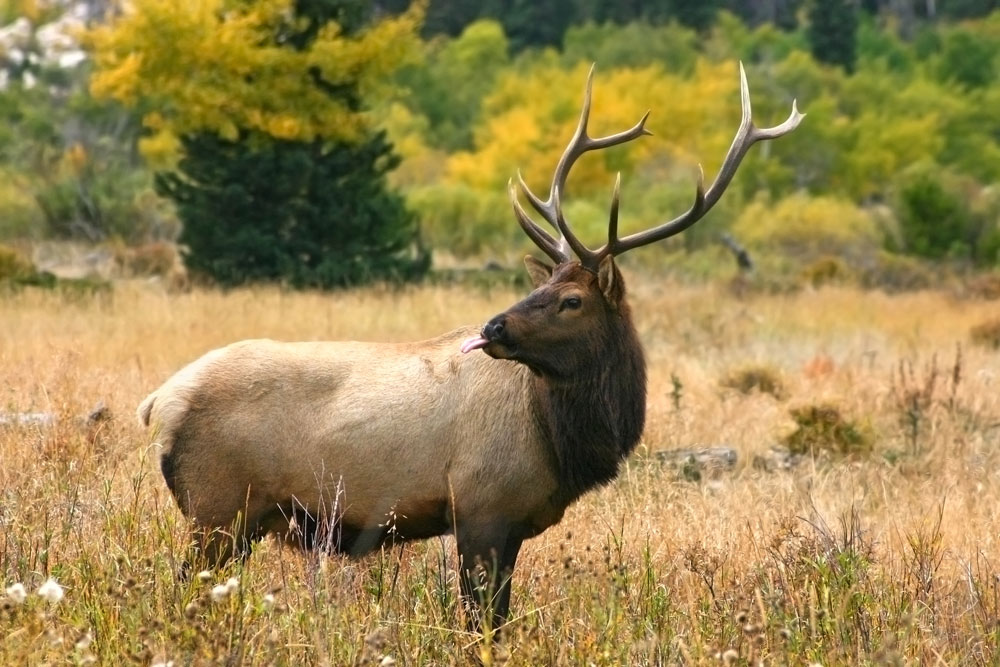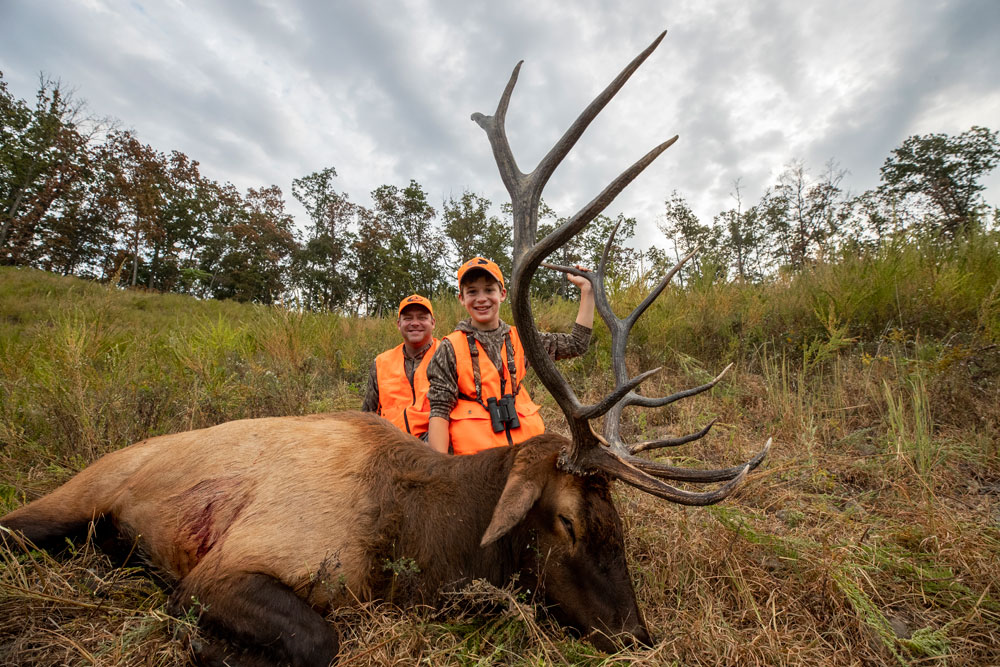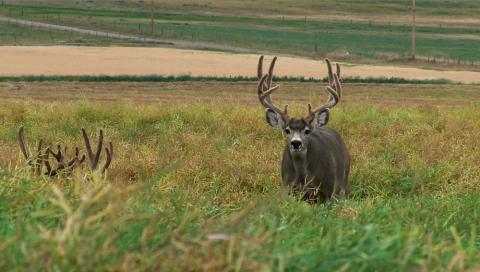Elk hunting is a thrilling and challenging activity. Hunt success rates for this magnificent creature are infamously low, making it all the more exciting when you manage to bag one.
Although predominantly found in the western United States, elks have been known to roam as far east as Pennsylvania and North Carolina. The best time to hunt elk is between September and mid-October, at the height of the pre-mating rutting season. Fully mature bulls are out in force at this time of year, fighting with each other to prove their superiority as mates for the cows and to stake a claim to the surrounding territory.
Hunters find it useful to know how to age a wild elk. If you’re looking to bag a trophy bull, you’ll need to find an elk that’s between six and ten years of age: Before this point, the bull will likely not have reached full maturity.
Here are some key things to look out for to help you age an elk:
Body Size
Quite simply, the bigger a bull or cow is in comparison to the other elk around them, the older they’re likely to be. Any bull upward of 380 or 400 pounds is likely to be in or near his prime. The same goes for cows anywhere above 300 to 350 pounds.
As expert elk-hunter Scott Hatch puts it, “If they look like a big yellow bus,” they’re probably a trophy elk well worth hunting.
Antler Size and Shape
Another effective way to age a bull while elk hunting is to look at his antlers. Bear in mind that many factors are in play when it comes to an elk’s antler size and number of tines, including the bull’s diet and personal rate of growth. But, generally speaking, a bull’s antler rack becomes larger and wider the older he gets.
Male elks younger than six tend to have spikes rather than branching racks for antlers. Spikes are single, straight-edged antlers with no branches or tines coming off the side.
Once the bull gets older, he can develop between six and seven different tines, or divisions, from his antlers.

Neck Shape
Mature bulls have a pronounced, curved posture from the top of their back to their lower neck, commonly described as a swayback in their lower neck.
Look out for that pronounced curvature of the bottom of the elk’s neck to help you age him.
Teeth Size
Whether you’ve chosen DIY vs. guided hunting for elk, it’s useful to try to get relatively close to the animal before taking your shot. If you are able to get close enough, identifying teeth size and shape can be one of the most accurate and consistent forms of aging an elk.
For bucks between two and four years old, you should be able to see two large, fully developed incisors at the front of their mouths. Elk also develop permanent front canine teeth by the time they’re three years old. You should be able to distinguish between trophy bull elk and younger bucks by the wear of their molars. Most elks over eight years old will have far smaller, flatter molars behind their protruding front teeth.

Hump Size
It can be difficult to effectively inspect an elk’s teeth when you’re out in the wild and unable to get too close. However, there are ways to accurately age an elk even if you find yourself relatively far away from it.
One particularly simple way to age an elk is to look at the hump of the bull elk. The hump is the rounded and curved section of the shoulder muscle just above the elk’s neck. The larger this hump, the older the bull.
Head Position
Another one of Hatch’s tips is to look for how the bull is holding his head. Generally, the lower the bull hangs his head, the older he’s likely to be.
The Bugle
Although some evidence suggests that the elk’s bugle (call) changes over time, elk hunters like Hatch warn against using the bugle as a standard, consistent measure for aging these animals.
“Where I’m from in Utah, we’ve had a bull, 380 plus, sound like a spike,” Hatch explains, “We’ve had little rag horns (non-trophy elk) sound like giants.” Be wary of using an elk’s call as your only measure of its age. The bugle can often deceive even expert hunters.

A Note on Cows
Recent scientific research suggests female elk are far better than their male counterparts at evading hunters. In fact, they seem to be almost impossible to track and hunt once they turn eight or nine years old.
This may be due to the fact that many bulls don’t make it to this older age nearly as often as cows, largely because bulls are prized prey for avid hunters. As a result, the females of the species live longer and learn, with age and experience, how to evade hunters.
Cows are more likely to purposefully limit their movement as they age, minimizing the chance of a hunter happening upon them. Female elk gravitate to increasingly extreme terrain to live in, making it very difficult for humans to hunt a cow’s territory.
If you’re looking to age a female elk, size is a good measure. The bigger the overall size and weight of the cow, the older she’s likely to be.
Teeth-wise, cows follow a similar pattern to the bulls, although they tend to cycle through the canine and incisor development process more quickly than their male counterparts.
Often, hunters will ignore cows in favor of a young buck or that elusive trophy bull. Surprisingly, there are several reasons why killing a cow is a more sustainable way to hunt. Avoiding the younger bucks allows them to mature into a trophy bull over the coming years, and controlling the cow population can help create herds that are healthier and more disease-resistant. Additionally, cow meat can provide a greater quantity and quality of food than older bull meat.
Taking the time to learn how to properly age an elk can prove the difference between success and failure when it comes to hunting them.
Before heading out on your next hunting trip, explore the Mossy Oak website for more invaluable tips on how to improve your chances of bagging a trophy elk.



























